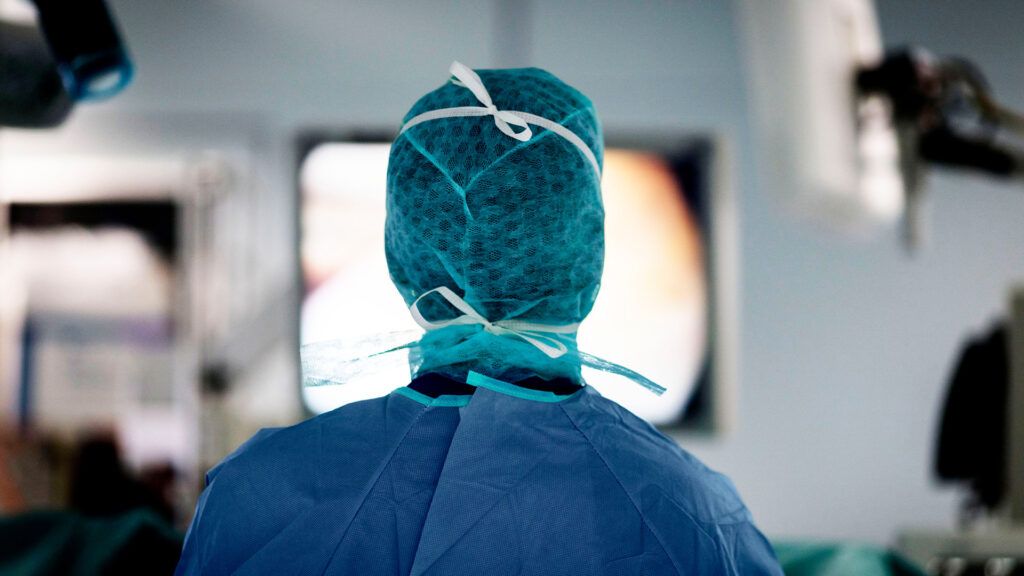
- A spinal electrode implant, installed via surgery, has shown promise in helping people with mobility issues from Parkinson’s disease.
- The device builds on earlier research that used spinal stimulation for people with spinal cord injuries.
- The therapy, which needs to be tailored to each individual person, helps activate regions of the spine once the brain has issued a command.
- There’s no cure for Parkinson’s disease, but emerging therapies are helping make the disease more manageable.
Researchers have released their findings into an experimental spinal neuroprosthesis device that’s designed to help people with Parkinson’s disease walk properly.
What’s more, the researchers say they have an excellent proof of concept in Marc Gauthier, a 63-year-old man with Parkinson’s who was implanted with the device.
Gauthier told Reuters that the device has changed his life.
The researchers’ findings were
More testing, research and regulatory hurdles will need to be overcome for these implants to become a widely available therapy for people with Parkinson’s disease.
However, experts say the early results are promising and researchers are hopeful that more data will lead to more breakthroughs.
“This is really a fascinating study that aims to improve a difficult symptom of Parkinson’s disease by using advanced technology,” Dr. Jean-Philippe Langevin, a neurosurgeon with Pacific Neuroscience Institute in California who was not involved in the research, told Medical News Today.“I think that these findings are really promising and open the door to a potential new strategy to treat Parkinson’s disease.”
This new concept builds off of earlier devices designed to stimulate the lumbar spinal cord in people who’ve suffered spinal injuries.
Dr. Eduardo Moraud, one of the study’s authors and a researcher at Lausanne University Hospital in Switzerland, told Medical News Today that he and his colleagues hypothesized that the same mechanism could be applied to multiple disorders.
“With a spinal cord injury, we know that there’s an interruption in the connection with the brain and so, therefore, no descending signals from the brain to that area of the spinal cord and that’s why patients are paralyzed,” Moraud explained. “In Parkinson’s, we know the origin is very different. It’s more in the brain. There’s a degeneration of neurons. But when it comes to locomotion, the problem is still the same. The commands are being sent, but they’re abnormal.”
To test their idea, researchers started out with experimenting on non-human primates. The device, which is implanted via a surgical procedure, detects brain signals (for instance, the command to walk) and then sends a signal to the device, which activates the relevant region of the spinal cord to assist with movement.
Other spinal cord stimulation research has targeted the thoracic spinal cord, which is the middle section of the spine. Moraud said he and his colleagues found success in leveraging this data and targeting a lower part of the spinal cord.
Testing then moved on to human subjects. To date, Gauthier and one additional person have begun using the therapy.
Moraud said that the surgery is not particularly complicated or invasive. That said, it’s important to remember that this form of therapy is not a one-size-fits-all approach.
“We need to be very selective when determining potential patients. Before surgery, we do MRIs, we do personalized models to really understand each patient: how long is their spinal cord, what is the region we’re going to target, and where are the roots,” Moraud said. “And then after surgery, it takes quite awhile to sort out the electrodes. We have 15 electrodes, and we need to be able to recruit different functions for the right and the left leg. It’s a bunch of combinations.”
Moraud said it took about a month to make these determinations for the first patient and there’s a significant follow-up period to ensure that everything is working properly.
“There are a bunch of challenges right now, and it’s a matter of going step by step, but I think it’s going to get done,” he said. “It’s just that right now, everything is done by hand, and obviously it takes a lot of time.”
Parkinson’s disease carries a fairly grim prognosis, with symptoms gradually worsening over time and carrying complications such as depression and dementia. Life expectancy after diagnosis is in the 7-year to 15-year range.
There’s no cure for Parkinson’s on the horizon, but new therapies such as spinal stimulation offer some hope for people living with the disease.
Langevin said that spinal stimulation is just one type of emerging technology.
“We’ve seen recent advances in deep brain stimulation therapy where devices can now record brain activity, which helps in the programming of the device,” he said. “Wearable devices are also available to help monitor Parkinson’s disease symptoms. The brain signals, along with the data from wearable devices, can help the clinician adjust medication dosage and timing. Finally, focused ultrasound has emerged as a new option to treat tremors in Parkinson’s disease.”
It’s a difficult disease to live with and can also create strain on family members and loved ones as they try to adapt. Langevin said that in addition to emotional support, one of the best things a person can do for a loved one with Parkinson’s is to encourage movement and activity.
“Physical activity has been shown to be universally helpful for Parkinson’s disease patients. Sometimes patients need encouragement to initiate exercising, so perhaps inviting the patient for a walk or a yoga session would be the most helpful gesture,” Langevin said.
